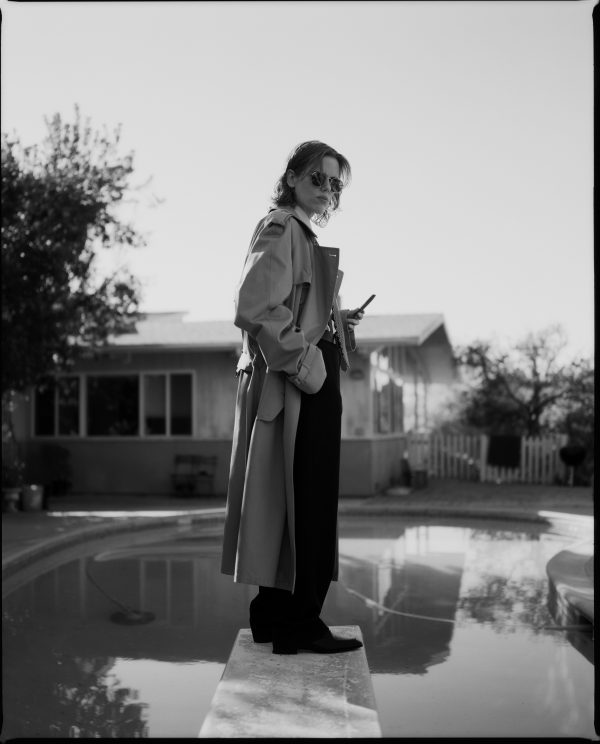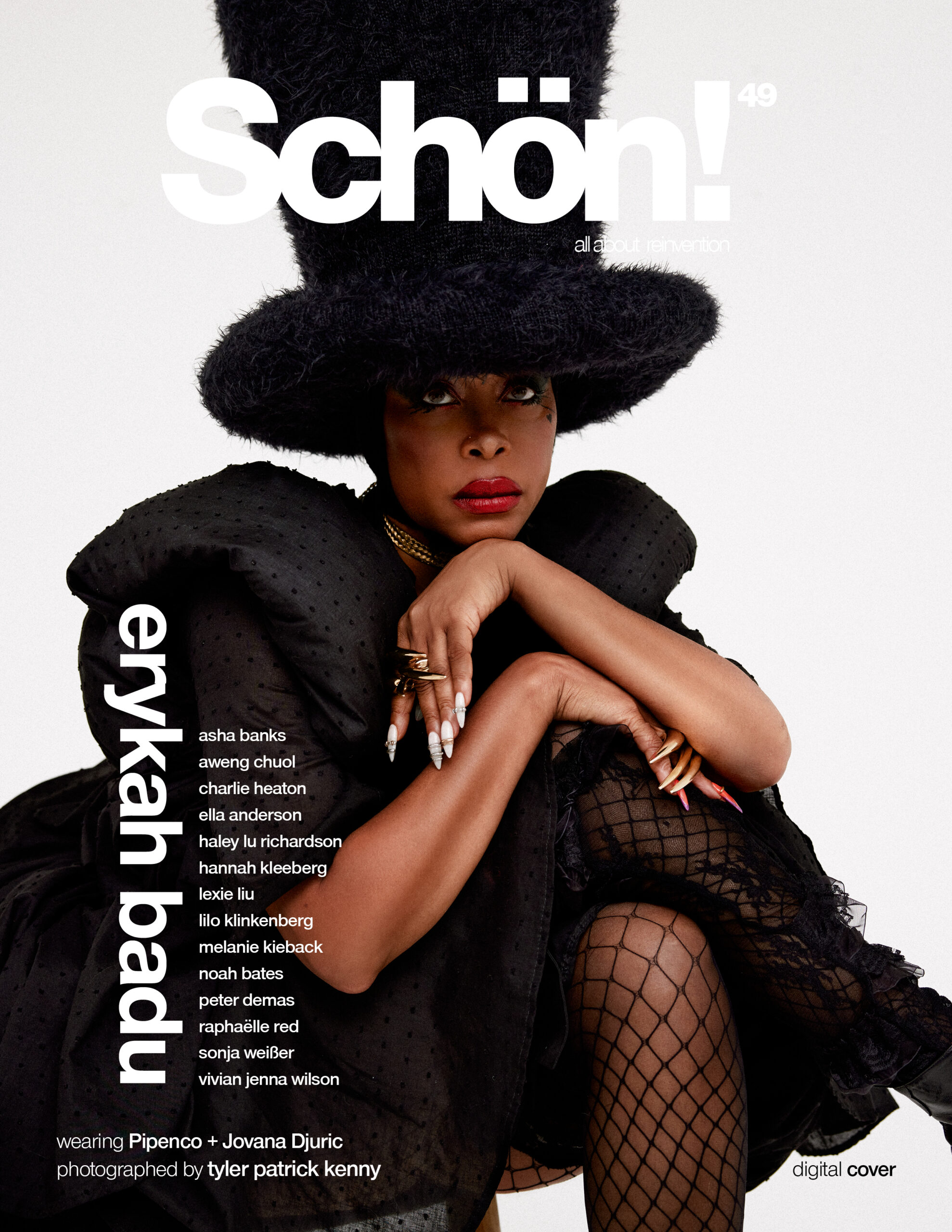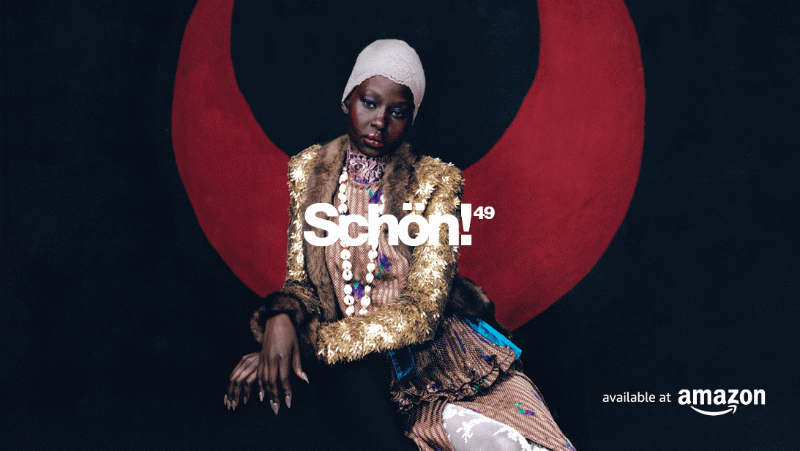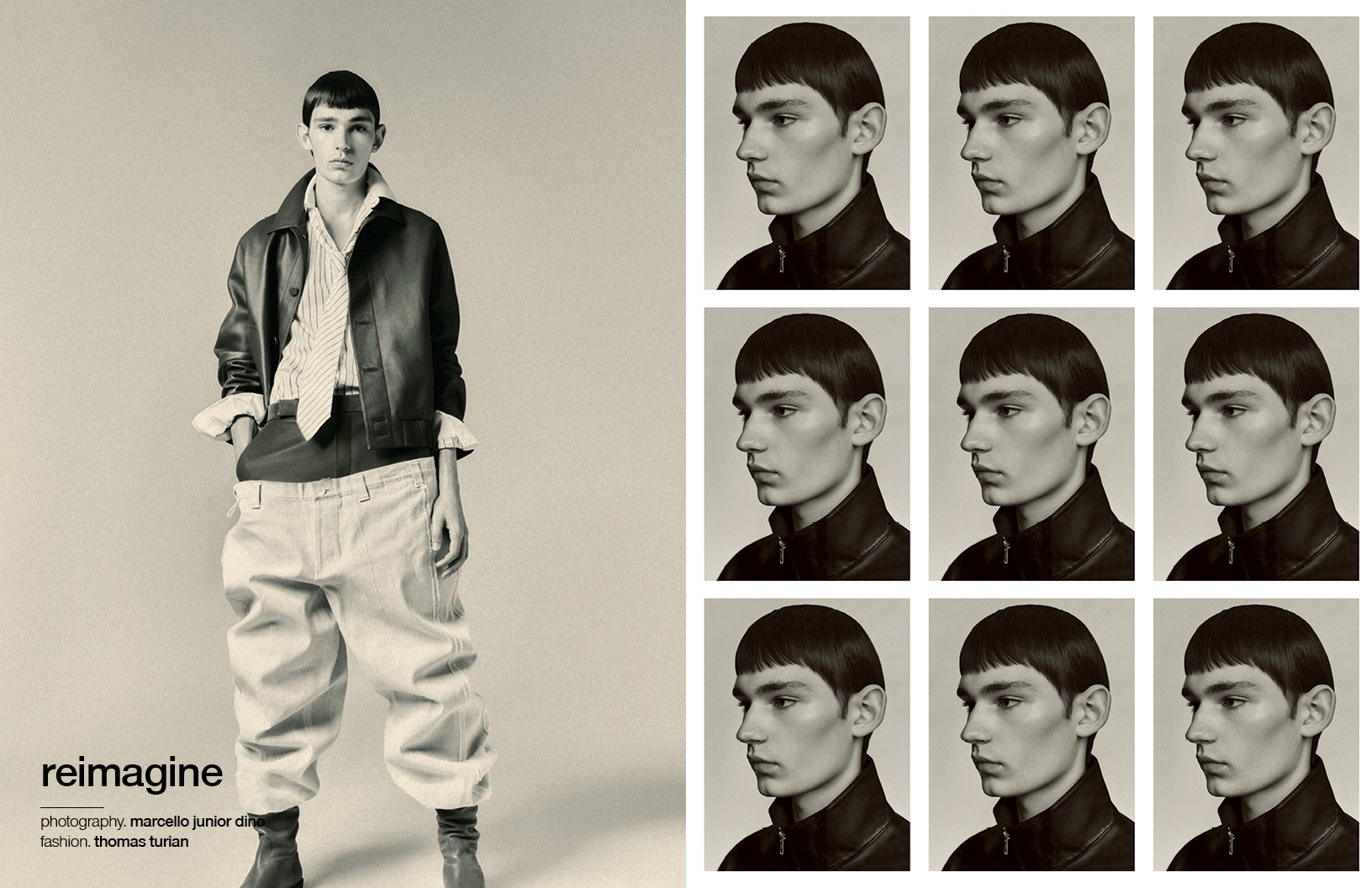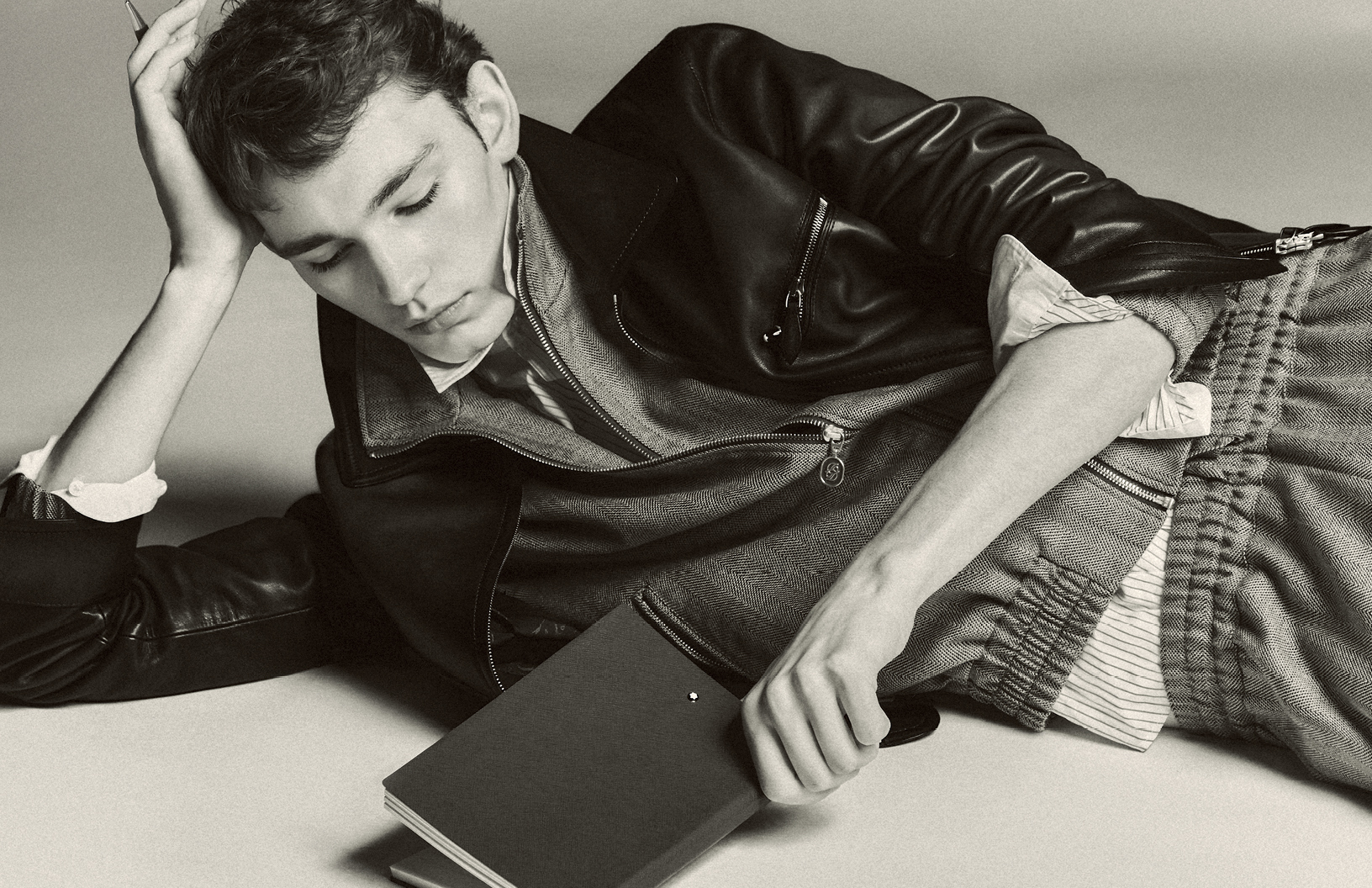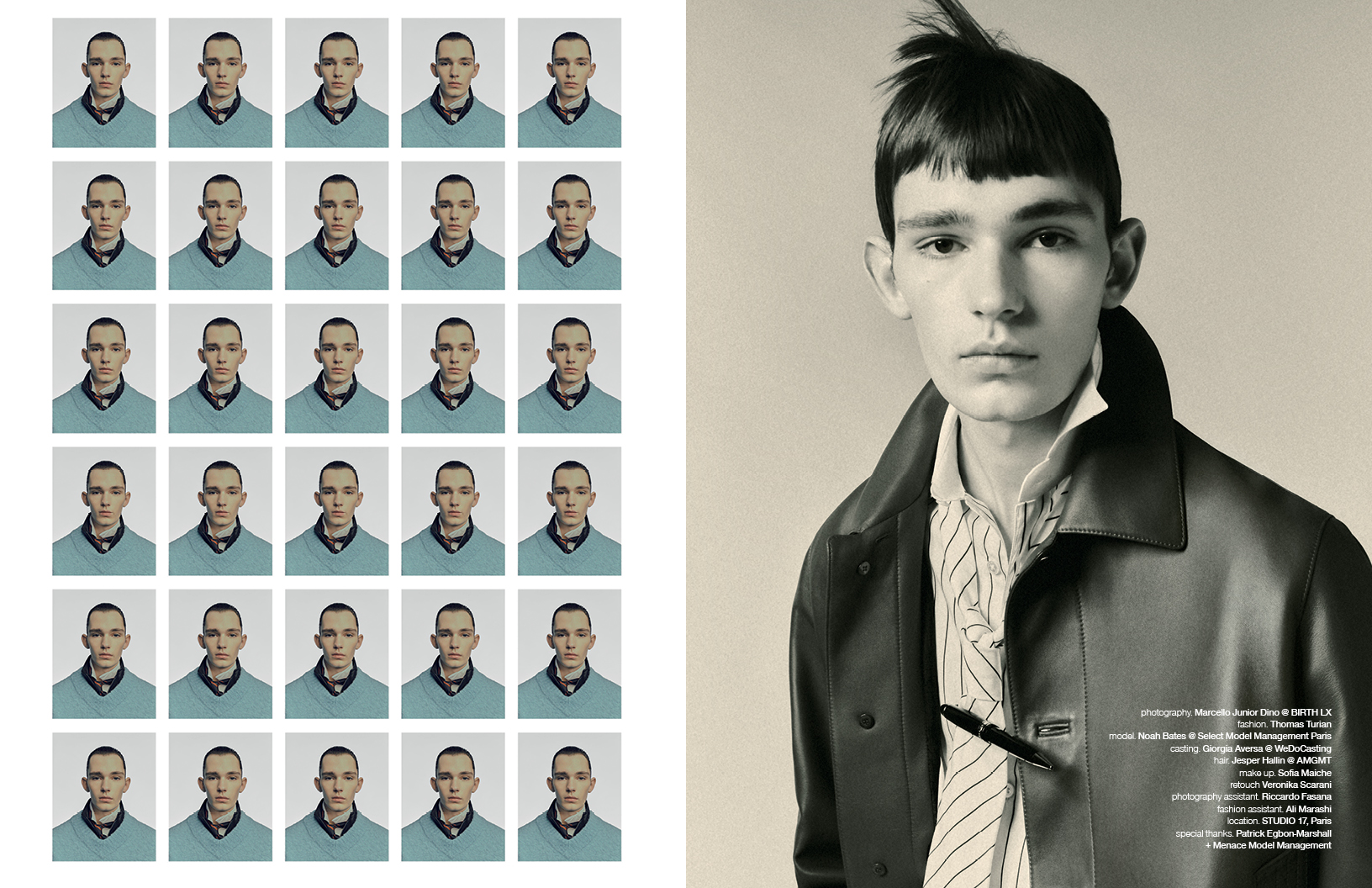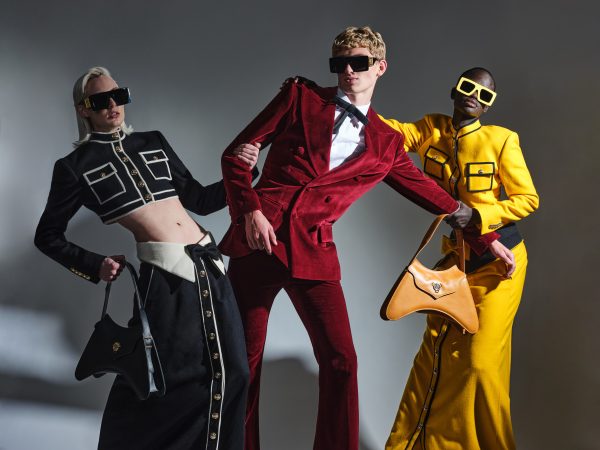Emerging like oysters from soft pastel shells, Ralph & Russo’s frothy feminine aphrodisiacs unfolded retro lyricism. A white picket fence decorated with cherry blossoms augmented 1950s silhouettes with peplum detailing. Hourglass shaped gowns with petal appliqué and Asiatic calligraphy were matched with embroidered gloves, whilst feathered boleros floated in the shape of voluminous clouds. Melting on the runway like diaphanous wax, were crepe capes and undulating sleeves; they danced against cascading powdery forms, that moved like beaded organza kites. The atmospheric romp, a communiqué of floral fondness, was further heightened in a cathartic finale; when a decadent bridal gown, garland with pearls and crystal, glided down the runway with the help of clinically clad clothiers.
Imagined for the boudoir, Alexis Mabille’s lace infused couture collection was a fluid, hedonistic, feminine fantasy enhanced with lush tulle and playful layering. In a somatosensory spectacle, Mabille’s elongated silhouettes were accentuated with protracted sleeves trimmed with fringe and feathers, finished with an androgynous twist. The French designer’s monochromatic métier oozed balletic softness: a sugary corset dress crowned with an ombre underpinning and an inky bustier frock, embodied Old Hollywood glamour. By using models of fashion week’s past: Debra Shaw, Carmen Kass, Irina Lazareanu and Audrey Marnay; Mabille’s ode to ageless beauty was enhanced, but not overwhelmed, by his signature bow fastenings and keen awareness of the feminine soul.
Strips of ebony gauze blindfolded models as they emerged onto gilded platforms in tailored taupe confections, suggesting that eyes are not the window to the soul, but rather, our soul is the heartbeat of our historical past and present. Influenced by Moorish virtuosity, the Syrian-born, Rami Al Ali’s intimate presentation showed sculpted floor length gowns in two-tone satins, hyperbolized by dextrous draping and swivelled embroideries. Beaded bodices hung like sweeping vines on top fitted asymmetrical torsos and skirts contoured like lobed horseshoe arches.
A militia disco: Alexandre Vauthier’s high-voltage, highly charged, electric parade of slinky chiffon and Swarovski embroidered sheaths, were jolted by the ‘internal uniform’ aesthetic of L’École Polytechnique. An inferno of delicious patent numbers ignited sparks on the shadowy stage: a burning jumpsuit imbued with an aviator influence was zipped in all the right places; while vinyl minis in black and olive drab puckered at the thigh. Sitting atop pleated shift dresses (that varied in both length and sleeve size) were generously cut boyfriend blazers. Vauthier’s sharp silhouettes were not magnified with ceremonial swords or bicorne hats; instead, he resharpened his sexy signature style by designing dresses that were less restricting but — equally —if not more — va-va-voom than his past collections.

Bouchra Jarrar
Bouchra Jarrar’s couture in the traditional sense, is untraditional. Jarrar has never been a designer to ornament her streamline constructions with intricate beadwork or frivolous frou frou. And still, she pushes boundaries – stitch by stitch, Jarrar is proving to be one of the finest tailors in the haute ‘game’. Her collection exuded quiet luxury. In fact, Jarrar’s oeuvre was the silent type, speaking in soft, symphonic swells — using ivory Chantilly lace to evoke delicate femininity against artfully moulded military-esque forms. Highlights included: a feathered, monochromatic redingote and a spun out jacket in charcoal and houndstooth, paired with a sleek velvet champagne shift. A voiceover of Marcel Proust’s In Search of Lost Time appropriately narrated the minimally charged collection, cementing a métier worthy of Proustian intermittence — where Jarrar’s designs fortuitously conflict — with preconceived realities of haute couture.
Spun like a Hans Christian Andersen tale, Yiqing Yin’s first official collection as a permanent member of the Chambre Syndicale de la Haute Couture was a meshy web of intricate detailing. Yin entitled her lyrical offering “Blooming Ashes” — and the cinders of rebirth were certainly evident — woven leather dresses soared like prickly crows, while billowing pastel delicacies were a much welcomed contrast. A master of manipulating material, Yin wrapped rope around the torso of a silver chiffon gown to reveal slight flecks of skin, leaving the impression of a broken mirror. Yin’s own signature reflection: a less fragmented construction, was best represented through her protracted dresses that integrated wire, mesh and fur.
All the lunacy, the chaos, the kitsch and the theatrics of thirsty guests set the stage for Jean Paul Gaultier’s homage to Paris’s equivalent of Studio 54 — Le Palace nightclub. Turning back time, Gaultier staged a nostalgic rollick into underground culture; a male model (turned actor) catcalled female mannequins as they playfully flirted down the runway in androgynous silk brocade pyjamas belted with rope tassels. A mahogany pinstripe suit was cut to perfection and in place of a scarf, a beaded chartreuse tie lingered on the model’s neck. Tangerine bomber jackets in mink and sequinned leather, were tossed over bleached denim trousers and skirts. Crimped hair bounced wildly under jewelled pillbox hats which accessorized polychromatic shift dresses and Amanda Lear’s disco hit “Fashion Pack” blasted, as models sporting tuxedo jackets and golden paillettes puffed cigarettes and spit out champagne for a — heavily stylised — highly-sexed — spectacle which “coincidentally” saw 69 looks.
We’ve all entered Elie Saab’s jungle before; a precious Amazon of extravagant evening wear that emanates tropical lushness. However, Saab’s latest jungle felt different, fresher, more like an untouched forest. As we ‘entered India’ (the theme of Saab’s spectacular couture display), we felt an impalpable purity penetrate Saab’s metallic seams. Emerging through faux branches on earthen terrain were lavish Victorian lace concoctions inspired by the roots of the British empire. Beaded fringe dresses swayed like twinkling palm trees amongst shimmering masterpieces that materialized in tones of dusted grey and lilac. Silk trousers that draped like desert tents were paired with gleaming boleros and embellished headpieces. Gossamar embroidered sari gowns cascaded into powder blue and rose stained waterfalls. Unlike the rest of Saab’s jaw-dropping opus, footwear was practical. The veteran designer opted to pair leather encrusted boots and sandals with his palatial gowns for the debutante voyageur.
It was all about the alphabet for Hong Kong born designer Bowie Wong, whose collection ABC123 went back to the basics by reawakening elementary design. Wong manipulated netted 3D fabrics to create dramatic silhouettes for the harajuku hedonist. Aerated crimson bows circled around spry-looking models’ necks like delightful flotation devices for a buoyant aesthetic further amplified in Wong’s block lettered constructions. Under striped suspenders, billowing blouses bore sleeves that circled in the shape of oversized petticoats. Cheeky sailor collared shirts complimented a sprightly baby doll dress that swirled like a black and white lollipop. Although Wong’s predominately tricolour collection was inspired by a schoolgirl uniform, his puffed sleeves and ribbon detailing nodded to the late Shirley Temple.
“Look number one: La Damnation de Faust..” narrated a soothing feminine voice — this was the soundtrack to Stéphane Rolland’s dramaturgical show, honouring bygone couture presentations of les années 50. The French designer’s graceful gowns stretched like silk swans as conceptually draped silhouettes were winged with white paillette detailing and feathered bottoms. Rolland’s signature jumpsuits were reworked, incorporating lush trains and inky spherical sleeves. Crinkled organza folded like clouds at twilight and ruffled asymmetrical skirts furrowed like decadent fans, unveiling an artful anthesis to Rolland’s spiked torsos that sprouted and swirled like iguana skin. A sculptural ballet of polychromatic pieces, Rolland’s oeuvre was like a scene from Funny Face, sans the lyrical styling and footwork of Fred Astaire.
Words / Chloe Rash
Discover the latest issue of Schön!.
Now available in print, as an ebook, online and on any mobile device.
































































































